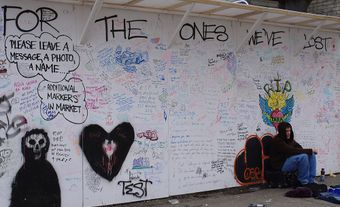This article was originally published in Maclean’s magazine on April 15, 1996. Partner content is not updated.
Like thousands of other victims of kidney failure, David Brooks knows what a mixed blessing dialysis can be.New Dialysis Treatment
Like thousands of other victims of kidney failure, David Brooks knows what a mixed blessing dialysis can be. In July, 1991, Brooks began a three-times-a-week routine of reporting to a hospital where technicians used a machine to pump out his blood, cleanse it of the liquid wastes that his kidneys once routinely handled - and return the blood to his body. The procedure, recalls Brooks, "kept me alive. But I had no energy, and I felt like I was just existing. It wasn't much of a life." Brooks, who lives in Bracebridge, Ont., still needs dialysis, but since the spring of 1994 his life has been transformed. Instead of making regular hospital visits, the 39-year-old furniture salesman now has a dialysis machine in his bedroom that slowly filters his blood at night while he sleeps. "The difference is fantastic," says Brooks. "I've got a whole new lease on life."
Brooks is part of a small experimental program set up by Toronto's Wellesley Hospital to test a new form of dialysis. The system, known as nocturnal dialysis, has won rave reviews from patients, who say they feel better than they ever did with conventional dialysis. The reason: because it can be used six or seven nights a week, the nocturnal system rids patients' blood of far more impurities than the conventional method. The new approach, which has attracted interest from hospitals in Canada, the United States and Sweden, has economic advantages, as well. Transplants are the best solution for victims of kidney failure. But patients usually have to wait three to four years for that, while undergoing conventional dialysis at a cost of at least $40,000 a year (covered by medicare in all provinces). By comparison, nocturnal dialysis costs only about $23,000 a year - an important benefit in an era of spiralling medical costs. On just about every count, says Dr. Andreas Pierratos, head of Wellesley Hospital's hemodialysis unit, "nocturnal dialysis is the next best alternative to a transplant."
Nocturnal dialysis was the brainchild of Dr. Robert Uldall, former head of Wellesley Hospital's kidney program, who got the idea from an established hospital procedure. Patients in intensive care for a wide range of problems sometimes suffer kidney failure. And Uldall knew that in such cases dialysis works best if it is administered continuously. Pierratos recalls that Uldall, who died last year, wondered whether all kidney failure victims could benefit from the same slow treatment.
And if dialysis took place at night, Uldall reasoned, more impurities could be washed from the patient's blood than in hospital sessions. Uldall's concept differed significantly from a form of home dialysis already in use: some patients who are too ill for hospital visits have a dialysis machine at home, but a visiting nurse carries out the procedure three times a week. In Uldall's vision, patients self-administer dialysis each night - with the process being supervised at the hospital via a computerized monitoring system.
Armed with a $750,000 Ontario government grant, Uldall launched a two-year test program in 1994. Along with Brooks, Torontonian Karen Jeffrey was one of seven patients chosen. The victim of a hereditary kidney ailment, Jeffrey began hospital-based dialysis in 1994. The routine was exhausting, says the 37-year-old Jeffrey, who is divorced and lives with her mother and four-year-old son, Brendan. Left weak and nauseated by dialysis, Jeffrey would feel better the next day - "but not great." On the second day after dialysis, she says, "my skin would start turning yellow and I wouldn't be able to sleep as the poisons began building up in me again." Now, after two years of nocturnal dialysis, says Jeffrey, who is on disability leave from her administrative job at a financial institution, "I have more freedom and more hope."
That could be good news for victims of kidney failure, whose numbers are increasing rapidly. In 1994, more than 16,700 Canadians were being treated for kidney failure - diabetes and high blood pressure are frequent causes. And now that baby boomers are entering their 50s, the number is growing by nearly 10 per cent a year. Still, if nocturnal dialysis catches on, not all dialysis patients will likely be eligible. Patients in the Wellesley program had to undergo a six-week training course aimed at instilling a sophisticated understanding of their medical condition - and the technical skills needed to run a dialysis machine in their homes. Pierratos estimates that between 15 per cent and 30 per cent of dialysis patients may be capable of doing that.
Nocturnal dialysis could soon get another trial: Dr. Amy Williams, a kidney specialist at the prestigious Mayo Clinic in Rochester, Minn., hopes to set up an experimental program there. Williams was impressed when she visited Toronto last fall and met some of the Wellesley patients. "They seemed to be doing well, and they looked happy," said Williams, "and that's something new for dialysis patients."
Maclean's April 15, 1996

 Share on Facebook
Share on Facebook Share on X
Share on X Share by Email
Share by Email Share on Google Classroom
Share on Google Classroom


